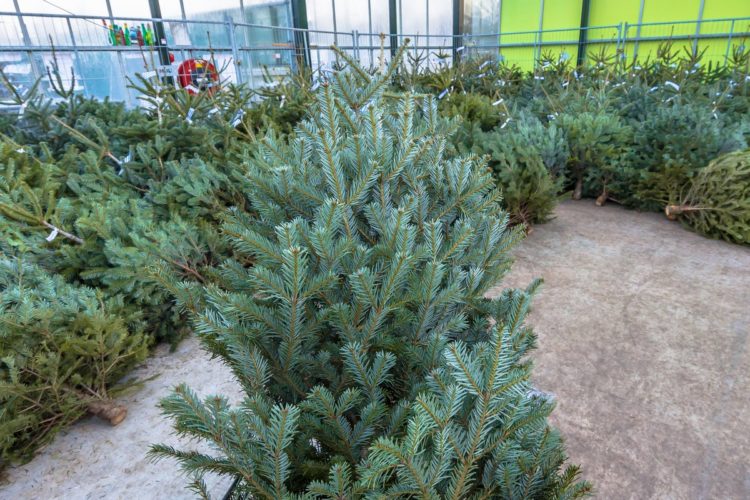Love the festive fragrance of a fresh Christmas tree every year for the holidays? You’re not alone.
While real trees and fake ones can’t compare on smell, in terms of the environmental and financial impact, are fresh Christmas trees really better than fake trees?
Some people think it is wasteful and harmful to the environment when Americans cut down and use millions of live trees to celebrate Christmas. The concern for tree loss is fair, but it is important to understand that there are over 350 million Christmas trees growing on farms across the United States as sustainable crops — much like corn, pumpkins or tomatoes.
Fresh Christmas trees, when grown sustainably, not only provide a boost to the US economy, but also benefit our environment — both while they’re growing and after the holiday season.
The financial benefits of fresh Christmas trees
In 2012 alone, over 46 million Christmas tree seedlings were planted on farms where they were grown, sheared, and protected from insects and diseases for six to ten years before they are ready for sale.
According to the USDA, in 2014, there were 3,386 Christmas tree producers in the United States who sold 20 million cut Christmas trees sold — a $367 value.
Here’s where real Christmas trees were purchased in 2017, according to a survey by the National Christmas Tree Association:
Choose & cut farm: 27%
Nursery/garden center: 15%
Big box store (Walmart, Home Depot, Lowes, etc.): 26%
Retail lot: 19%
Non-profit group (Boy Scouts, churches, etc.): 10%
Other: 3%
Oregon, North Carolina and Michigan continued to rank top in the nation for the number of trees sold, as well as value of sales. With 15.4 million trees cut and sold, growers in these three states accounted for nearly 78 percent of all cut Christmas trees sold in the United States in 2014.
The many environmental benefits of fresh Christmas trees
The most popular varieties of trees cut for Christmas are Fraser fir, Noble fir and Douglas fir, followed by Balsam fir and Scotch pine.
And while those fir and pine future Christmas trees are growing, they consume large amounts of carbon dioxide (greenhouse gases that are warming our planet), produce oxygen, prevent soil erosion, capture and reduce storm water runoff that can cause stream flooding, and provide habitat and winter cover for many wildlife species.

Benefits of recycling fresh Christmas trees
When you are ready to take the tree down after the holidays, do not be in hurry to send it to a landfill. Evergreen boughs make a great mulch for perennial flowering plants that do not tolerate other mulches that can hold excessive moisture around their crowns. They can also be placed on the ground near bird feeders to create a little shelter for ground-feeding birds.
Many communities have a special pick up or designate a drop off site for Christmas trees. They may hold a big community bonfire or grind the trees into mulch that can be used for the garden in spring.
Tree recycling after the holidays has become part of community traditions in several national forests. The USDA notes that recycled trees can be used to establish fish habitats, create mulch for future plantings, and build soil erosion barriers. Using the trees for these purposes also keeps them from filling up local landfills.
Land managers of several national forests in the area have found that the old Christmas trees can be used to make a comfy home for schools of fish. Fish habitats create ideal spawning grounds to ensure successful reproduction, a place of refuge and shade for the young, and shelter from predators. Also, fish habitats provide a food source — a breeding ground for algae and plankton to attract bait fish and lure larger fish to favorite fishing spots.
Contact your nearest national forest or grassland to see if they, too, recycle Christmas trees. Other great resources for recycling trees are the National Christmas Tree Association and the Arbor Day Foundation.

Fake plastic trees don’t compare to fresh Christmas trees
The first artificial tree was made largely of aluminum, and was initially manufactured in the United States in 1958.
Today, most artificial trees are made from PVC plastic, with 85% of them being manufactured in China and shipped thousands of miles across the world to a retail store in the United States. Those artificial trees do not provide oxygen, soils stabilization, or wildlife habitat — although we might be able to recycle the plastic at some point.
In 2011, Americans purchased 9.5 million artificial trees, helping China’s economy.
So this holiday — especially as we purchase many of our electronics, toys, and decorations that were manufactured in other countries — consider taking the family on an outdoor adventure to buy an American-grown fresh-cut tree from a local farm. It really does help our economy… and our environment.








